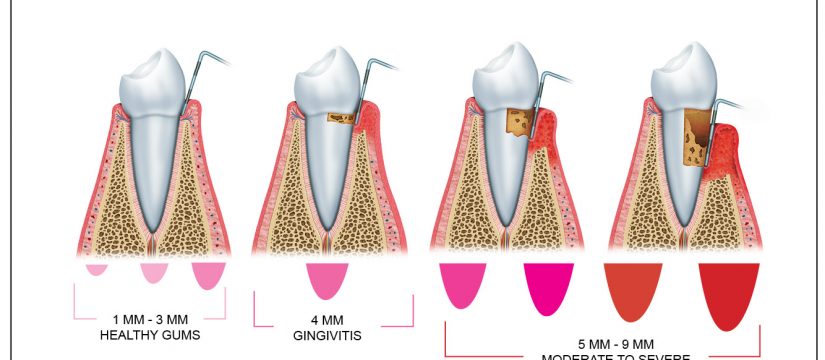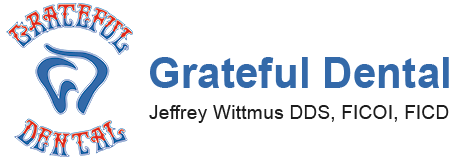
Have you ever been told that you needed a “deep cleaning?” If so, you may be at risk for periodontal disease. Periodontal disease, also known as gum disease, is a disease that affects 47.2% of adults aged 30 and over in the U.S., as reported by the CDC. In fact, over the age of 30, gum disease is the leading cause of tooth loss, not cavities. Gum disease is characterized by bleeding gums, persistent bad breath or bad taste, loose teeth, swollen and red gums, gum recession, changes to the way teeth fit together, or gums that pull away from the teeth. A diagnostic review of your dental and medical history as well as a comprehensive oral examination and thorough periodontal charting can determine whether you are at risk for gum disease.
There are 4 stages of gum disease, gingivitis, beginning periodontitis, moderate periodontitis, and severe periodontitis. Gingivitis, the first stage of gum disease, is characterized by some tenderness and bleeding of the gums when brushing or flossing. Bleeding is your body’s response to bacteria. When corrective measures, such as professional cleanings and routine brushing and flossing, are taken, gingivitis is reversible, however if left untreated, gingivitis can progress to periodontitis.
Periodontitis, a more severe stage of gum disease, is characterized by plaque and tartar, which forms under the gums, which cannot be removed with simple brushing at home. As the periodontitis progresses, the plaque and tartar buildup can cause damage to the bone and ligaments that are there to support the teeth and keep it in place. As the bone and ligaments become damaged, the gums may begin to pull away from the teeth, forming a pocket. The deeper the pocket is, the more severe the periodontal disease. Advanced periodontitis is characterized by severe damage to most of the bone and ligaments, which can cause teeth to shift or loosen, cause changes in the bite, and produce a bad taste in the mouth. Uncontrolled periodontitis causes bacteremia (bacteria in the blood) which has been linked to cardiac diseases that can cause heart attacks or strokes.
Our office takes on a serious approach when treating gum disease. We schedule gum disease patients for a dental cleaning every few months, may prescribe and use antibiotic microspheres in areas of the gum that need it, and even employ an effective, minimally invasive treatment using laser therapy. For more information of laser therapy, please see our post and video by copying and pasting this link to your web address bar: https://www.gratefuldental.com/service/diode-laser-periodontal-therapy/ or by visiting our blog on laser therapy at https://www.gratefuldental.com/laser-therapy-treatment-for-periodontal-disease/


